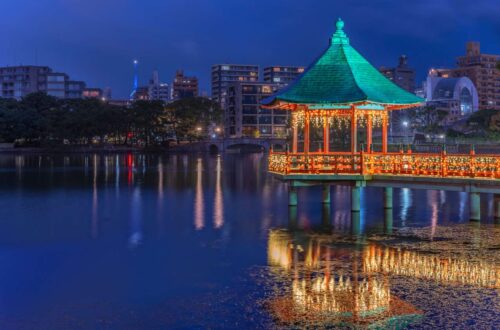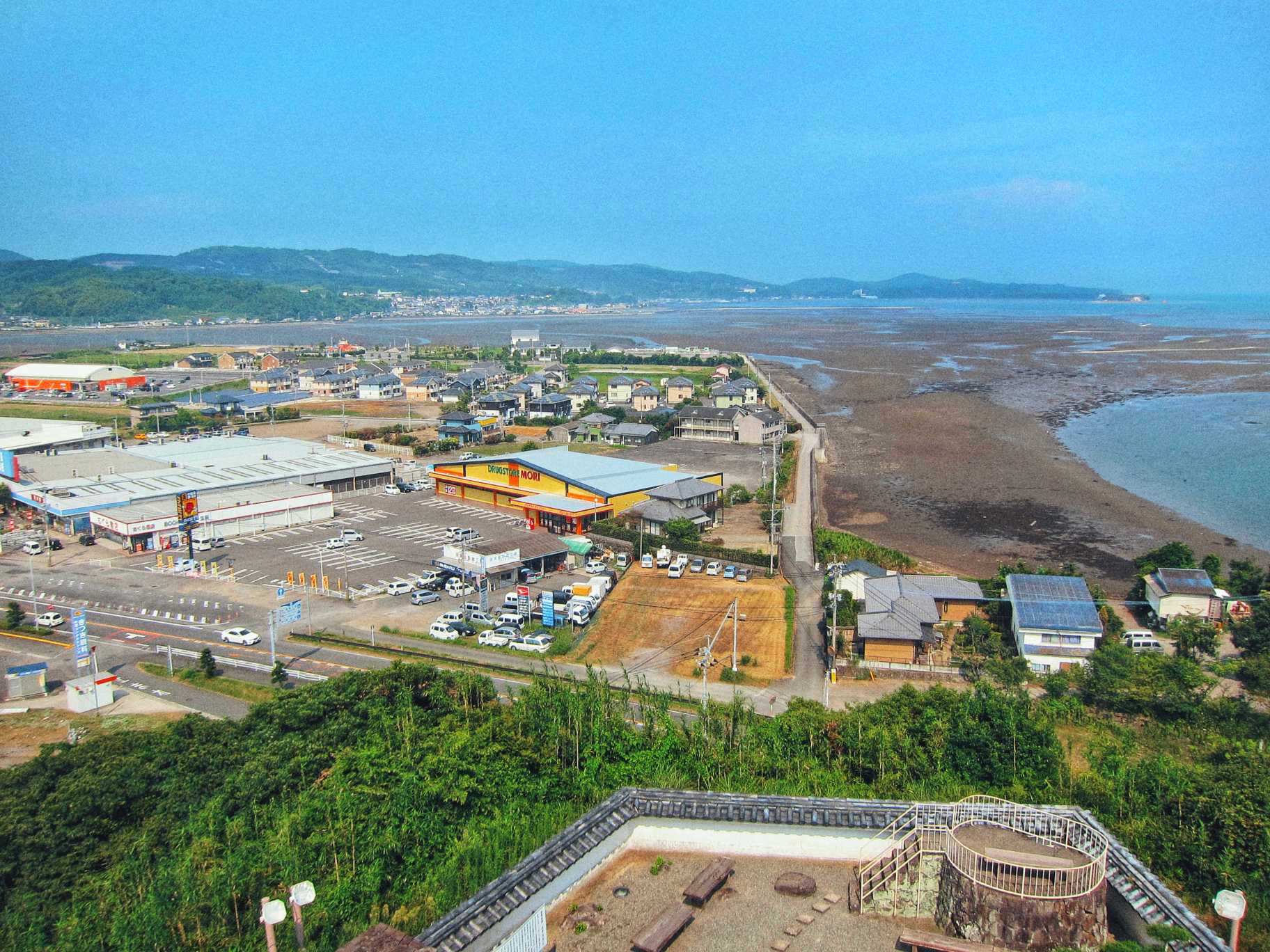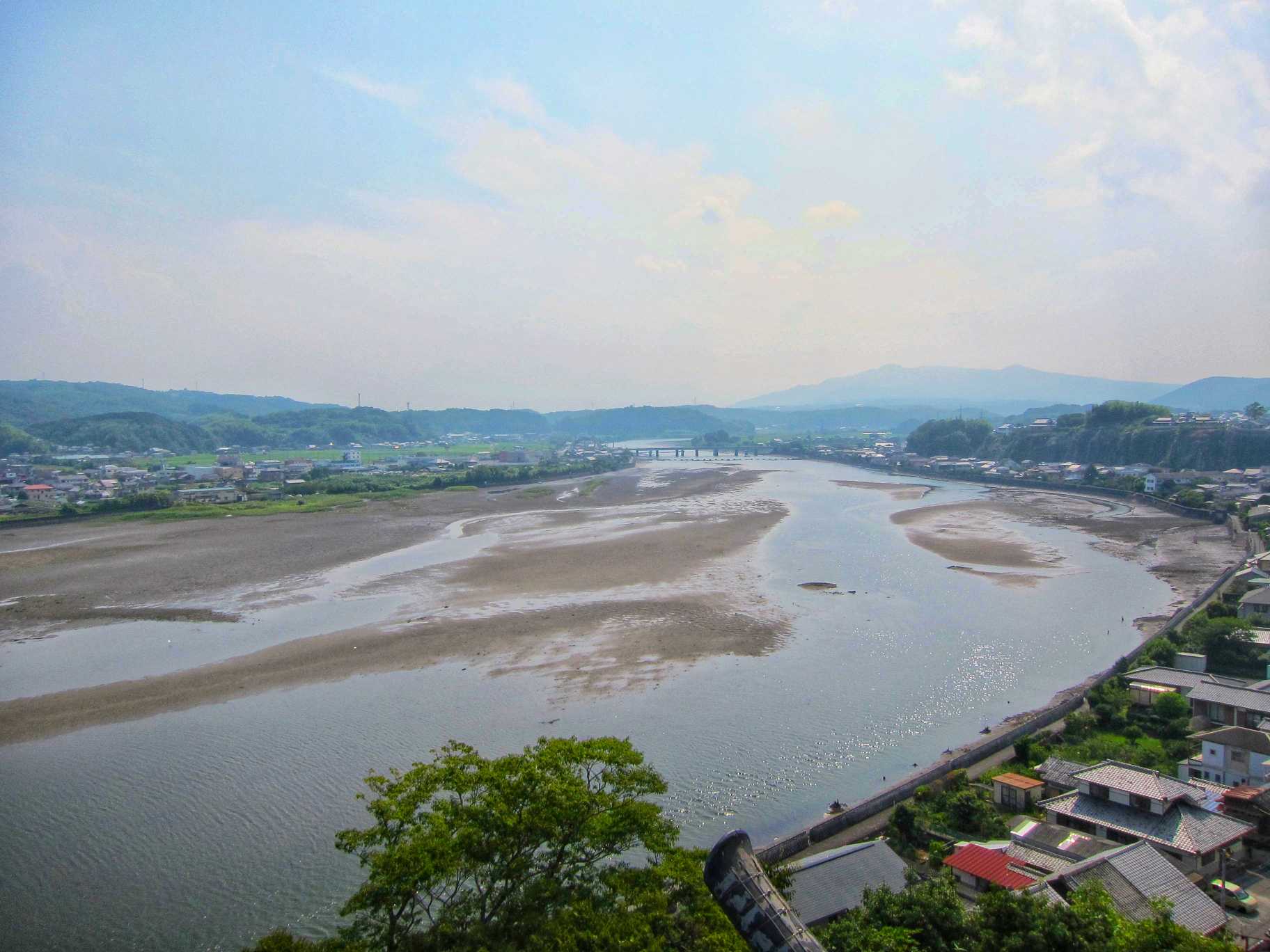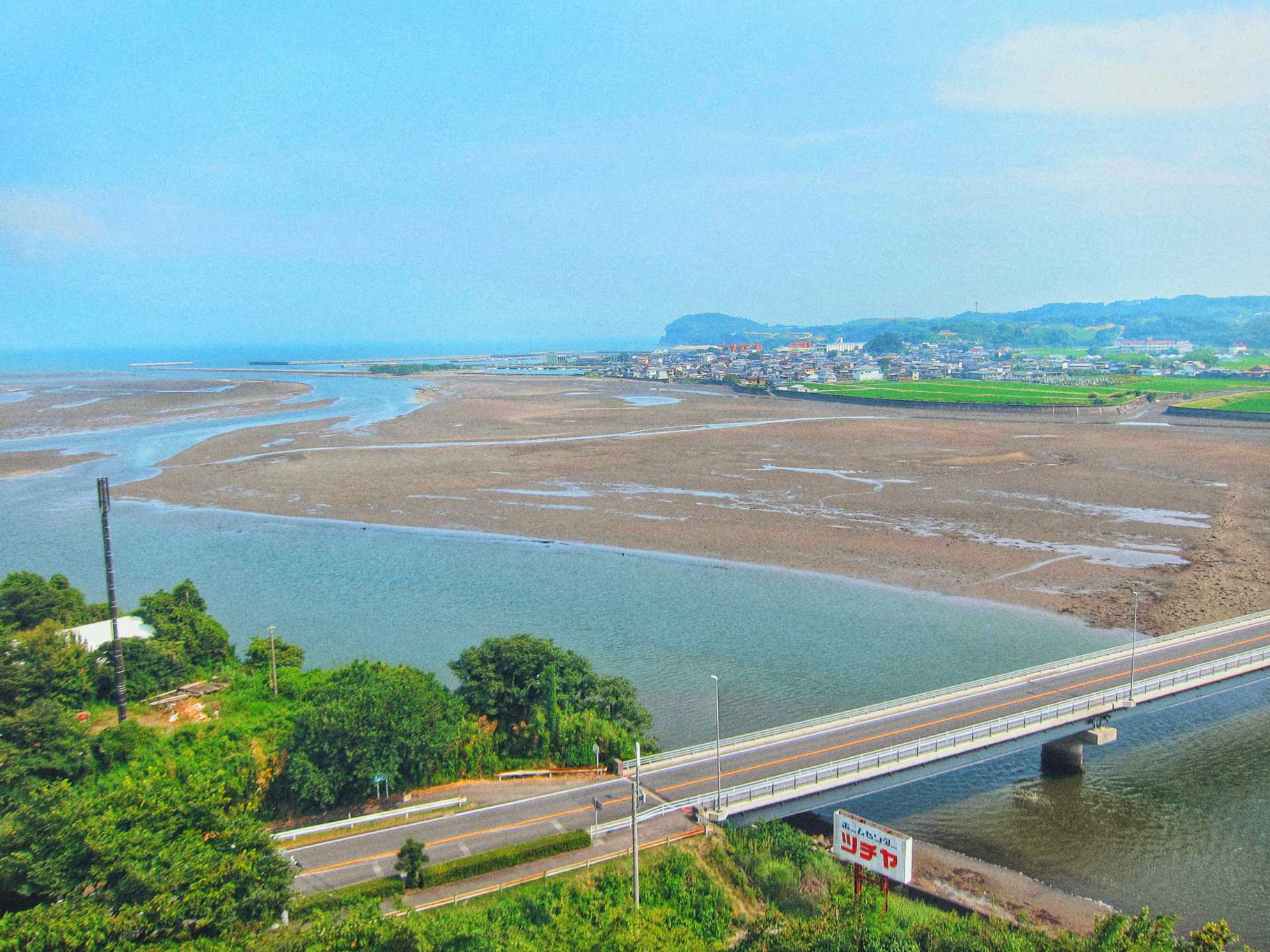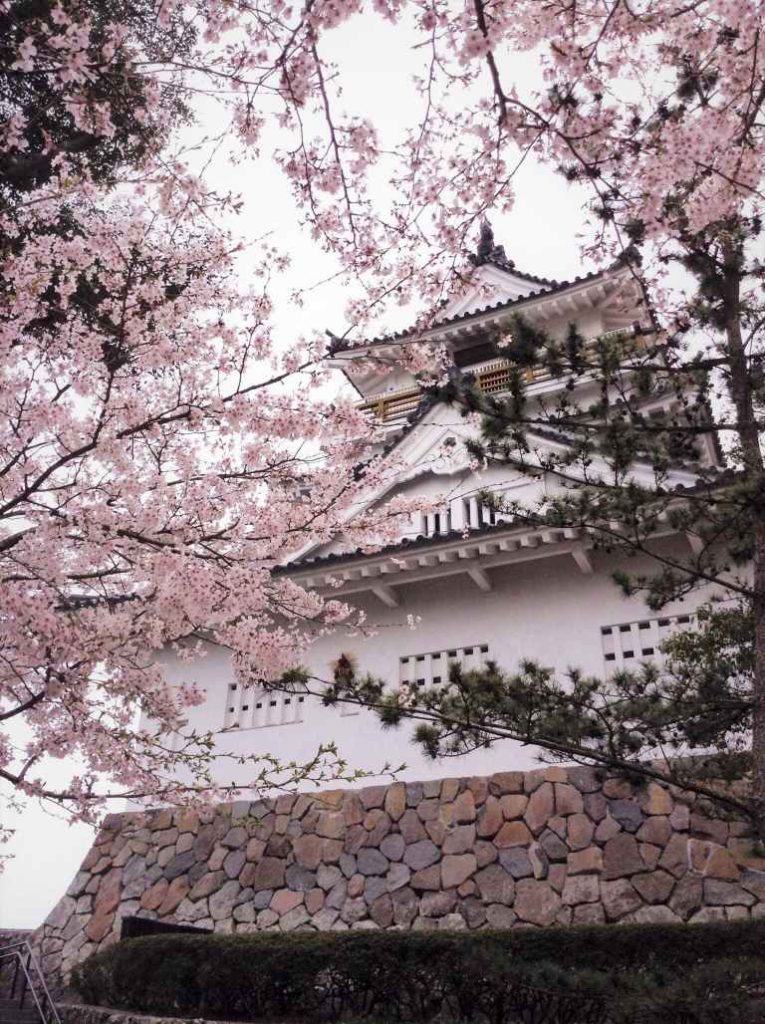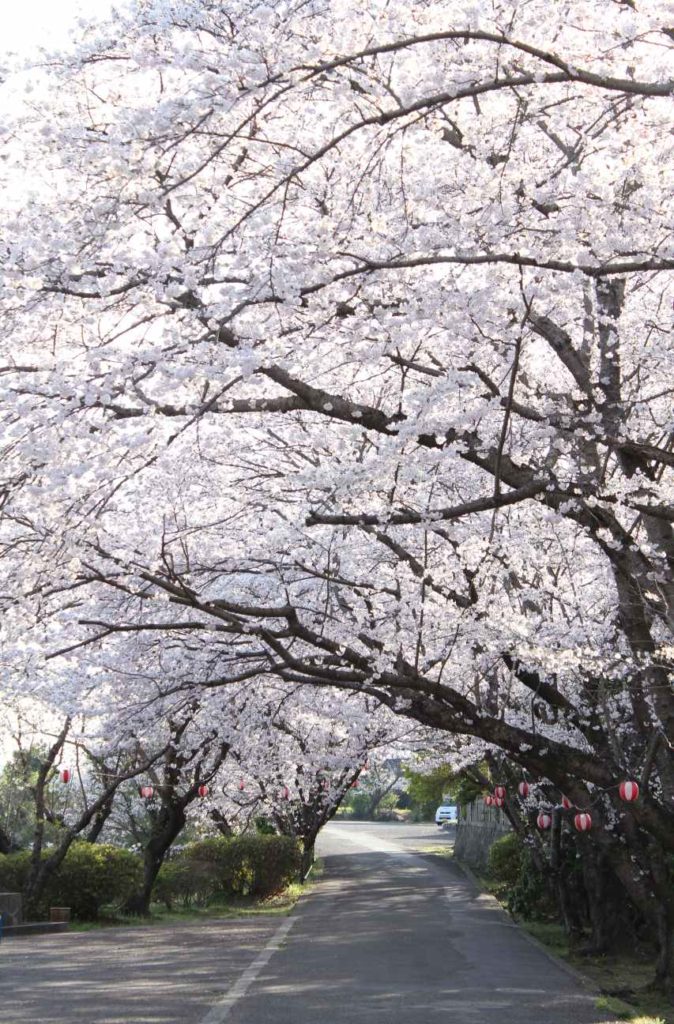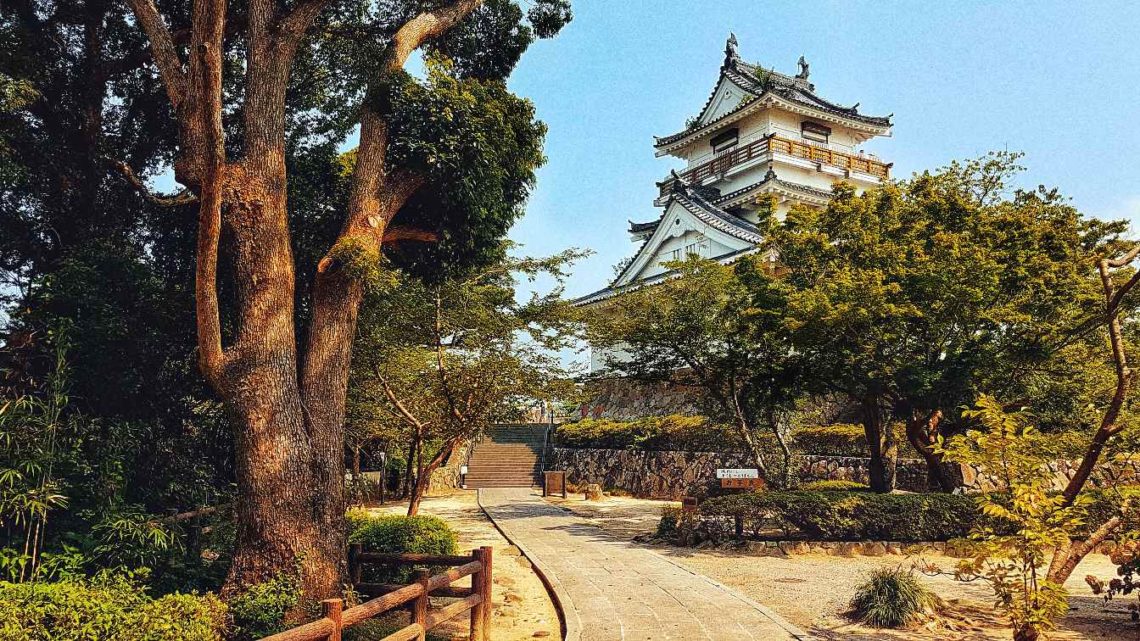
Kitsuki Castle – A Complete Travel Guide To Japan’s Smallest Castle
Welcome back fellow travelers. Previously, we covered the hidden history together with the tragedy behind Kitsuki Castle (杵築城), Japan’s smallest castle. Subsequently, the castle was nearly forgotten throughout the passage of time. Fortunately, in 1970, the local council of Kitsuki (杵築) decided to rebuild the castle keep and later turned it into the town’s mascot. Did you know this little castle holds a treasure that very few people know about? Join me as today, we will be exploring the treasure that Kitsuki Castle holds dearly.
Table of Contents
Exploring Kitsuki Castle
About Kitsuki Castle
Located 25 km from the city of Beppu (別府) in the island of Kyushu (九州), the castle is located along the coastline facing the Seto Inland Sea (瀬戸内海). It formerly served as the residence of the feudal lords who ruled over the sandwich castle town. Presently, it served as a symbol to Japan’s one and only sandwich castle town. Interested in exploring Japan’s tiny castle? Then, click on the below sections to find out more.
If you are visiting the castle during summer (June to August) like me, most important point is to bring your own cap, sunblock and even better, sunglasses. The weather is hot during this season and some parts of the castle lacked shades, making you feel like you are walking in a desert.
The Entrance to Kitsuki Castle
To begin with, Kitsuki Castle (杵築城) is located a convenient 10 minutes’ walk from the town’s bus terminal (杵築バスターミナル). Firstly, look out for a huge stone gate with a curvy top and a name sign as shown below. This is a Torii (鳥居), a traditional gate that symbolises an entrance to a Japanese Shinto shrine. The castle is located right next to a mini Shinto shrine, hence the reason for the Torii’s existence.
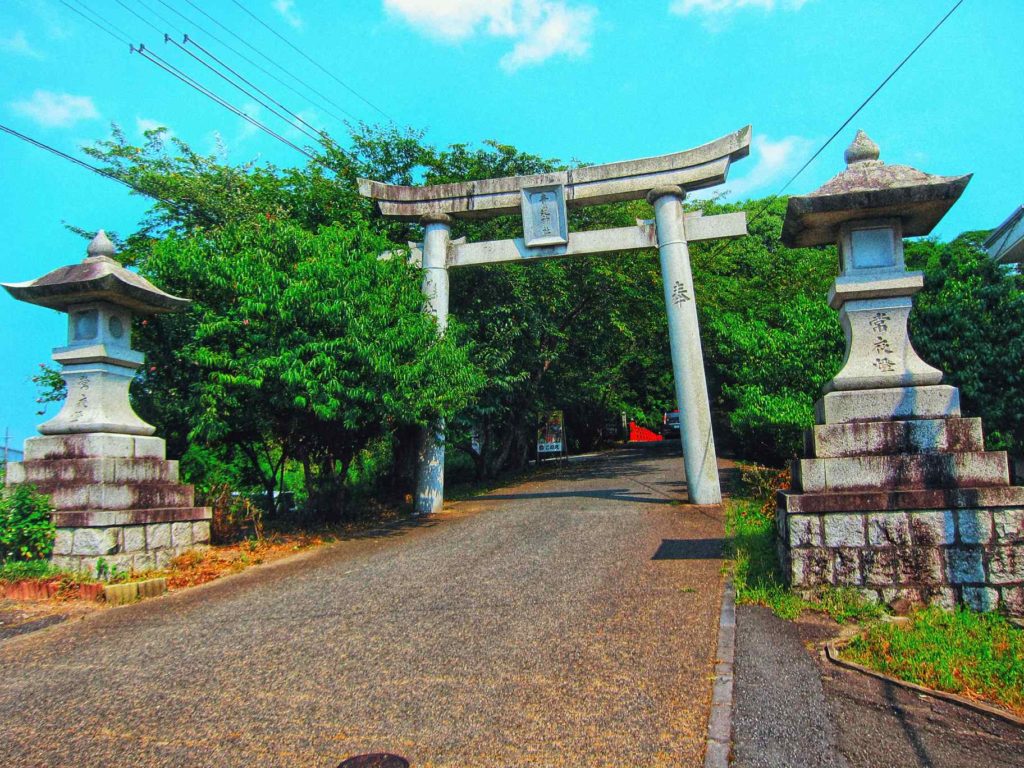
Continue forward and you will encounter your first opportunity for a lovely photo, the castle’s little charming gate. This castle gate is called Ōtemon (大手門) and was reconstructed after the original was destroyed. Tiny and yet charming, it represents a metaphor of this beautiful castle’s once forgotten history.
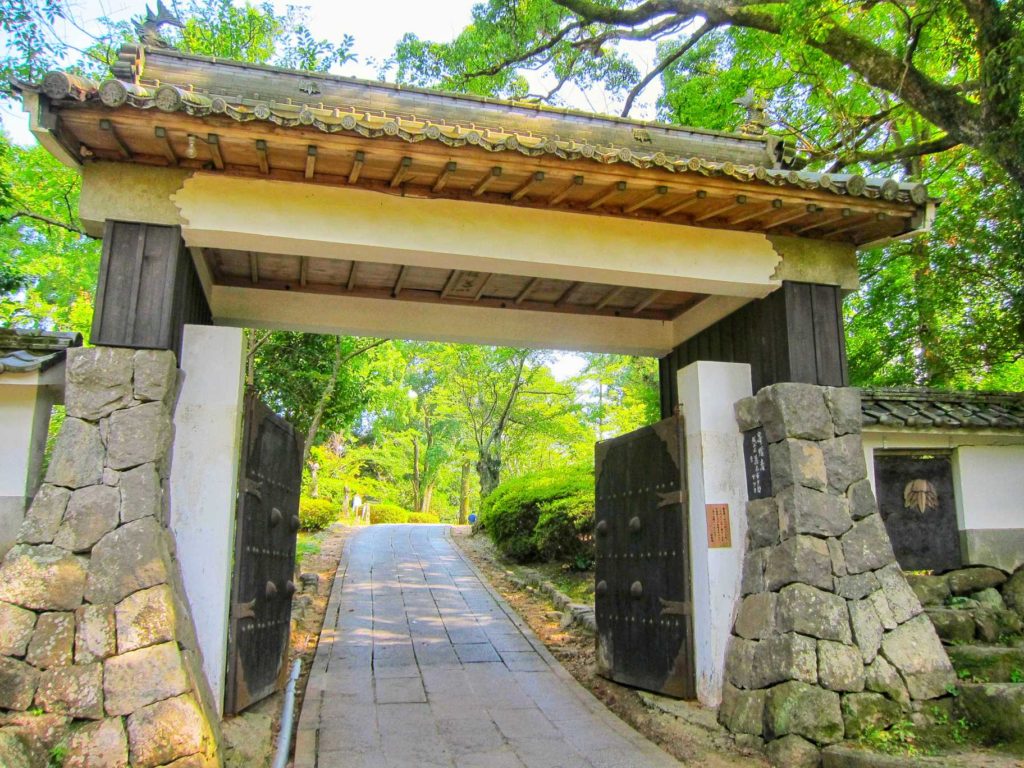
The Castle's Garden Compound
Walk past the castle gate and you will encounter a garden filled with a collection of stone pagodas (石造物群). This area is called the Shiroyama Garden (城山公園) and houses the ruins of the former castle grounds. These pagodas however were not originally part of the castle’s compound. Instead, each of them originated from different timelines and various areas surrounding Kitsuki. To preserve these artefacts, the local council relocated a total of 170 of them into this park (like a mini museum).
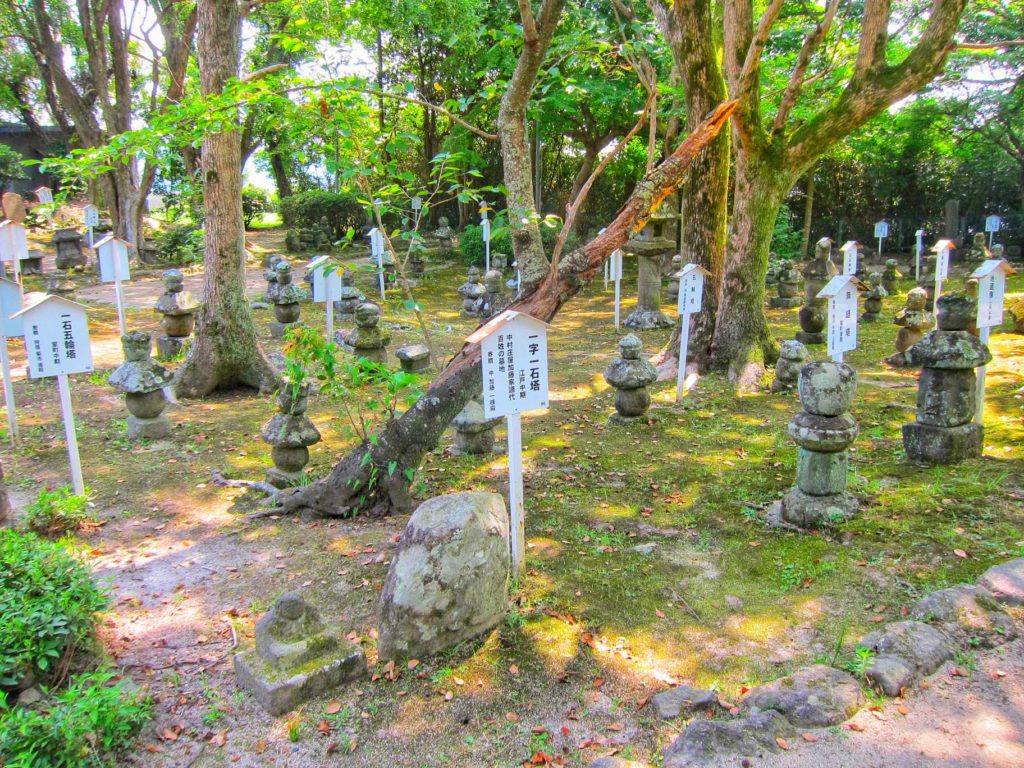
The design of each pagoda varies from a single stone carving, to a five-story pagoda and an inscription tablet. Some served as a tombstone for a villager, while others served as memorials for local heroes that were lost throughout the vestiges of time. Personally, I find this to be a lovely area; because the pagodas exude a sense of mystery that makes you want to explore deeper. Too bad the lack of proper English translations makes it excruciatingly difficult for non-Japanese speakers to understand their significance.
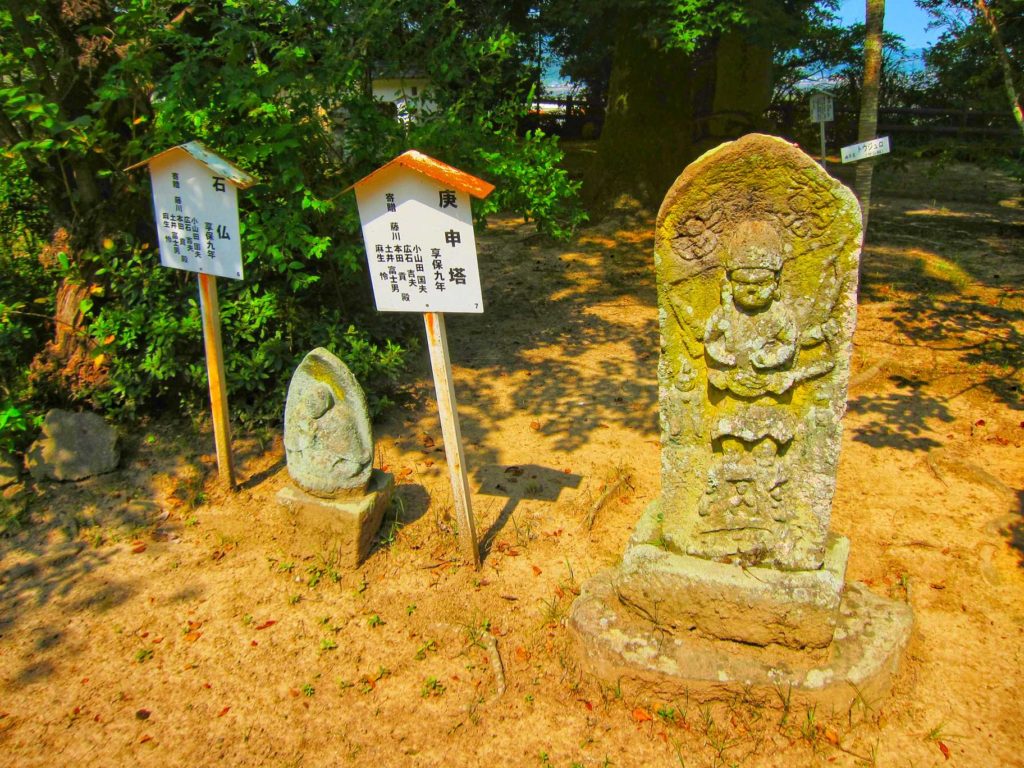
But First Lovely Photo Opportunities of the Castle
Past the garden and soon we are at the doorsteps of Japan’s smallest castle. This little boy is charming in its unique way, especially with those little plants nestled on its roof. Get ready your cameras and smartphones as the compound below offers for some fantastic photo opportunities. During spring, the presence of the cherry blossoms (桜) will transform the entire scene into a wonderland while completely providing a beautiful makeover to the castle.
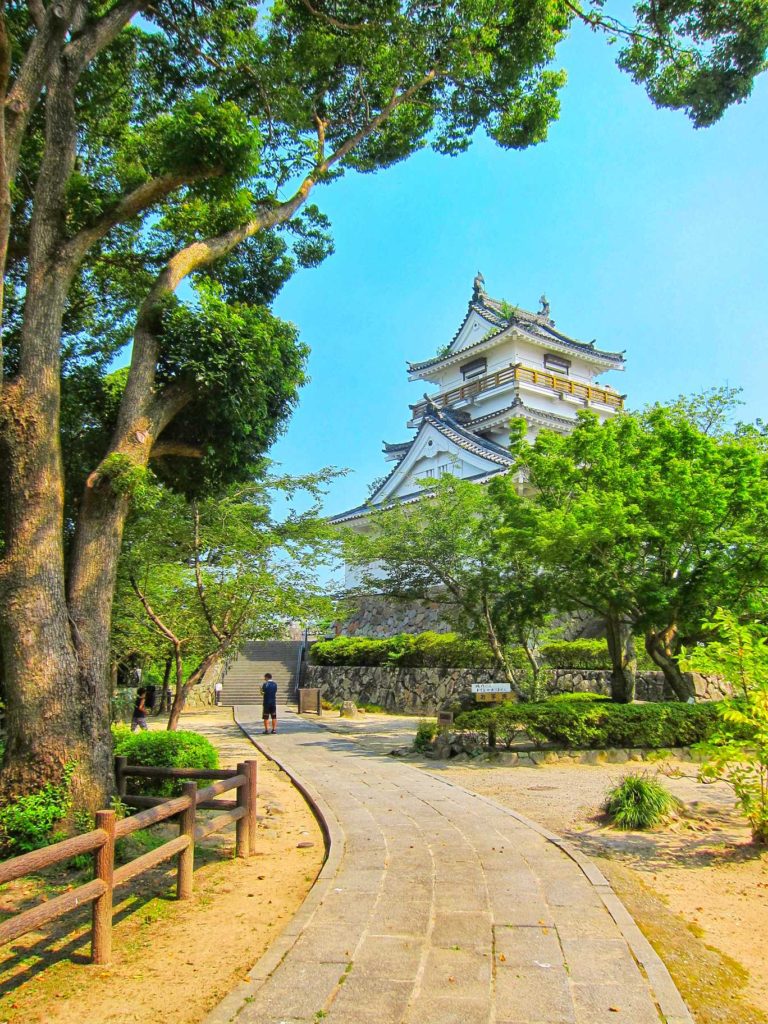
Despite being a cute little castle, it does have its fair share of tragic pasts. Its original owners committed suicide after losing their heir to a war. Additionally, earthquakes, typhoons and fires plagued it over the centuries, causing its destruction. The present castle is a reconstruction from 1970 and currently serving as a mini museum.
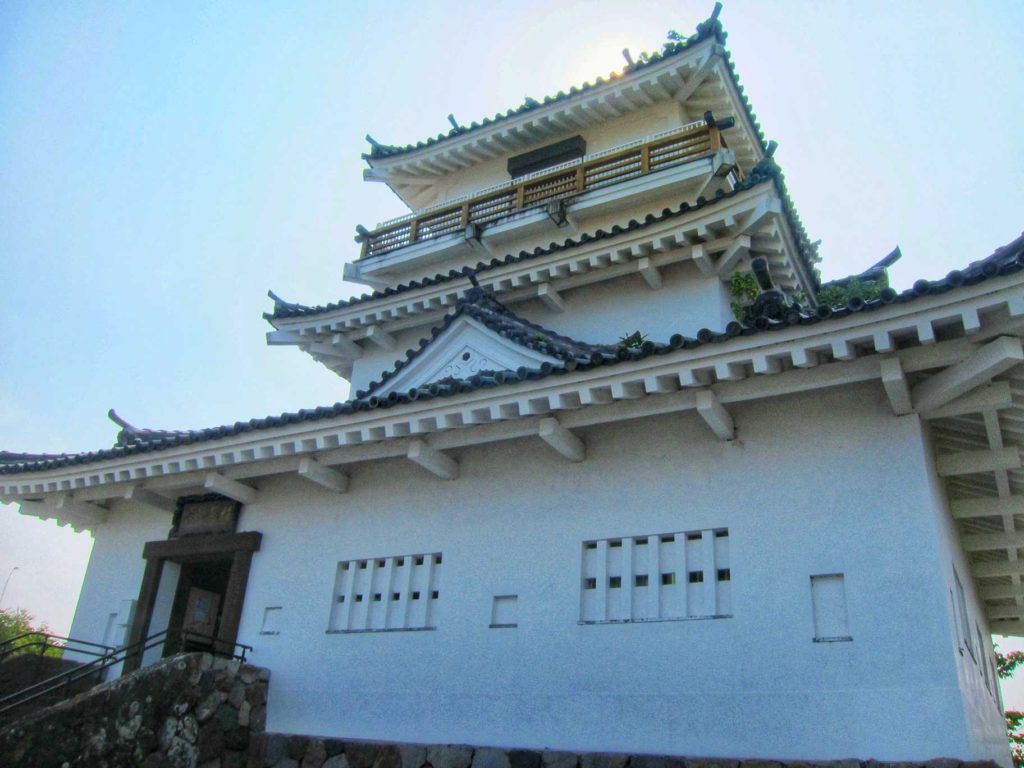
Inside the Castle
After walking under the blazing sun for an hour, I finally managed to enter the castle for some needed cooldown. While the present castle is now a museum, it provides a cozy environment to relax and offers a niche collection of display of real samurai armours (yoroi/鎧), helmets (kabuto/兜) and artefacts. Also, thank goodness they have air-conditioning too.
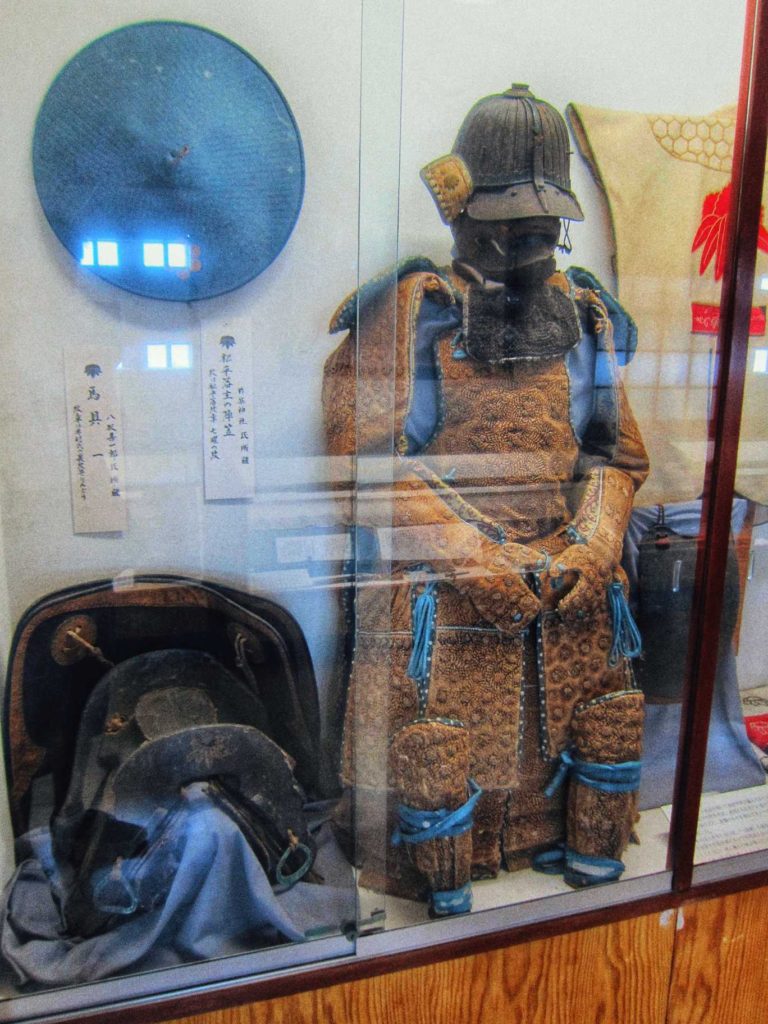
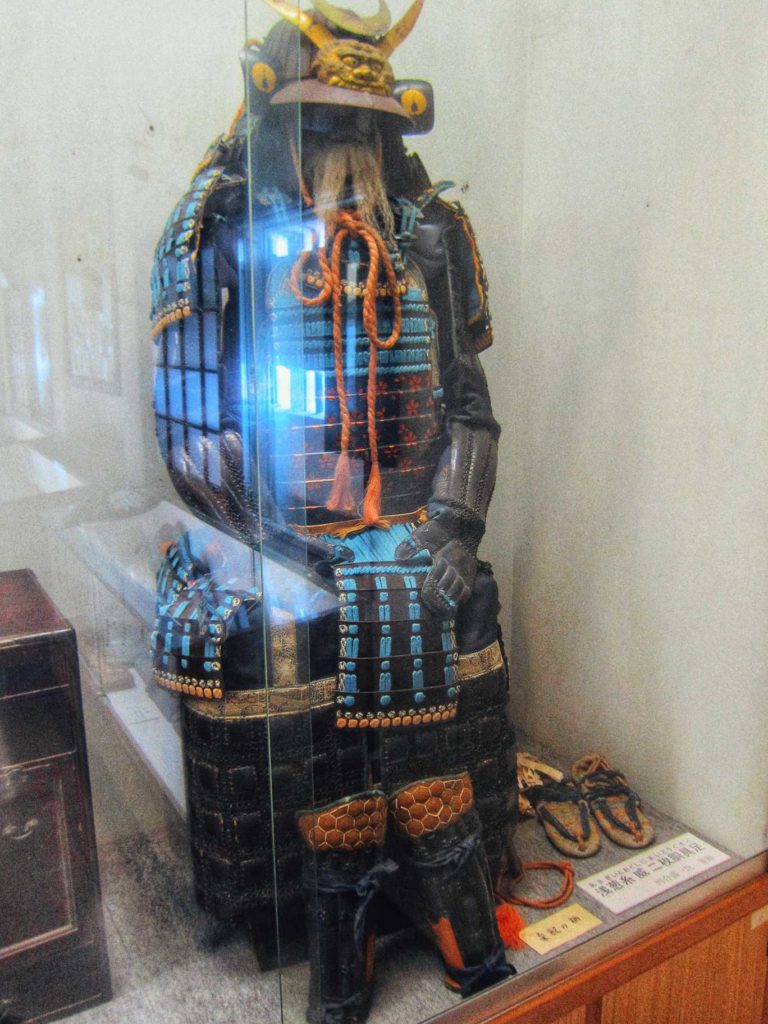
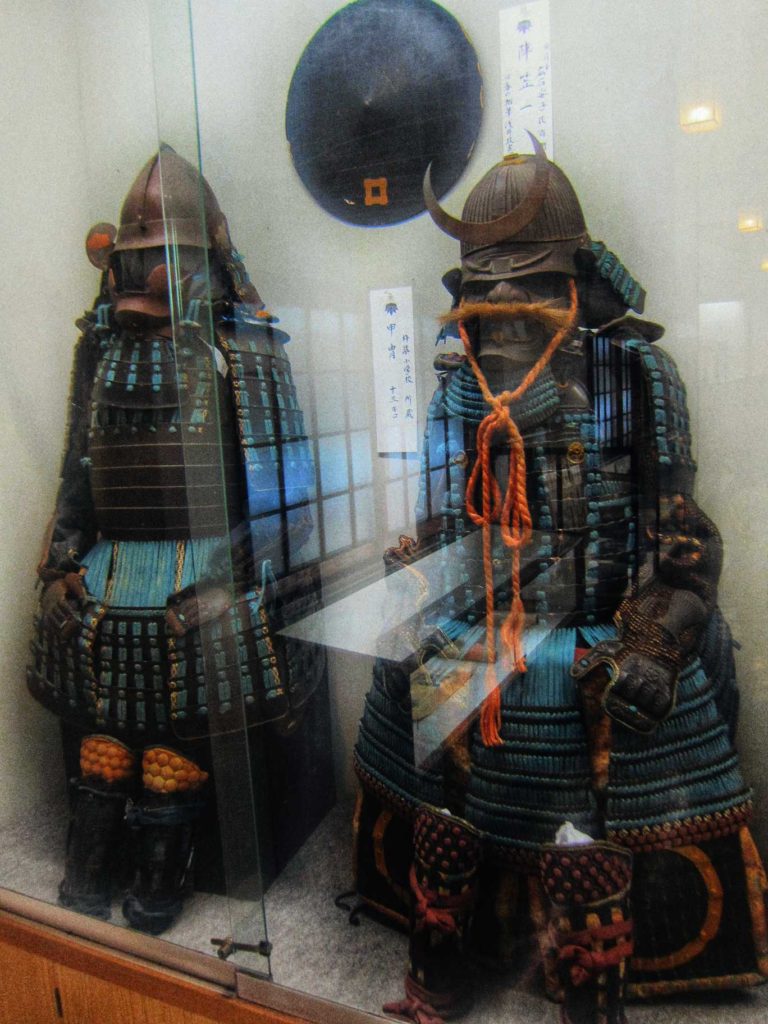
Additionally, for the fans of cosplays and samurais, the museum also provides a little corner where you can dress up as one and channel your inner samurai.
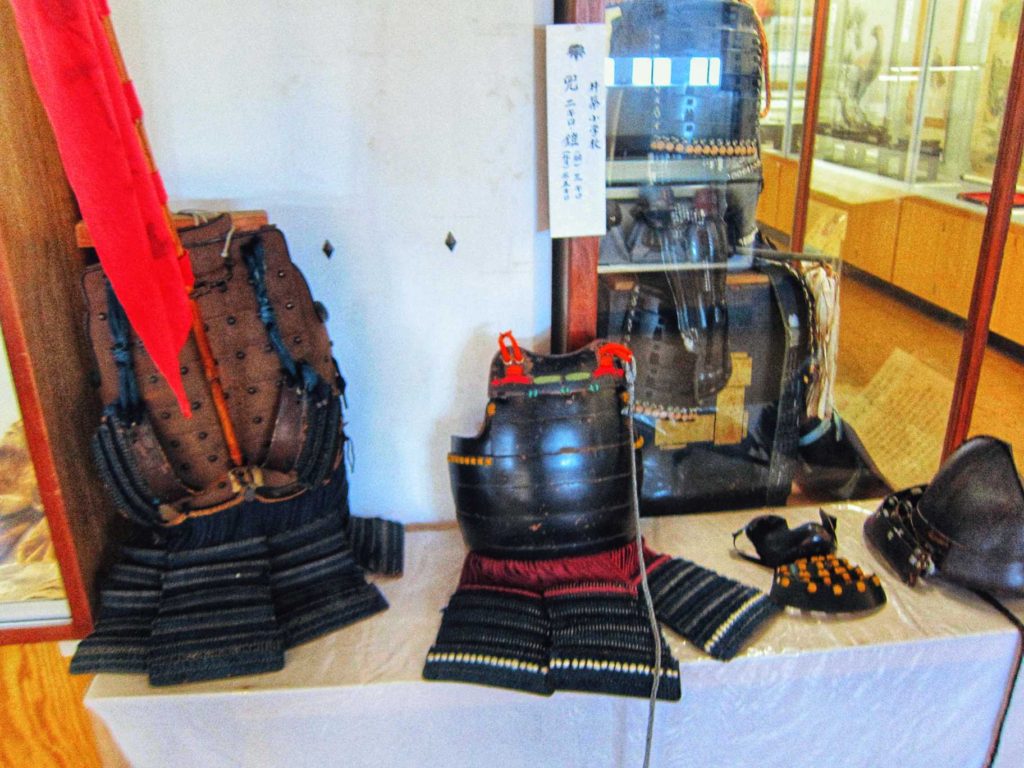
There are two artefacts that belonged to close family members of famous Warring States/Sengoku Jidai (戦国時代) figures. Try and see if you can find the below:
- Firstly, a black coloured armour with a helmet/kabuto (兜) containing a crescent moon design – It belonged to Mangikumaru (万菊丸), the second son of Azai Nagamasa (浅井長政); a warlord who bore 3 daughters that became influential political figures.
- Then, a helmet/kabuto (兜) with a red coloured face protector – Formerly belonged to Ishida Masazumi (石田正澄), elder bro of Ishida Mitsunari (石田三成); who famously fought against Tokugawa Ieyasu (徳川家康) in the decisive Battle of Sekigahara (関ヶ原の戦い).
The main treasure of the castle lies not in the museum, instead it’s on the third floor. Let’s head up to the top of the castle.
Introducing the Treasure of Kitsuki Castle
After the exploring the museum, straightaway head to the must-visit 3rd floor for the castle’s hidden treasure. And behold, the 3rd floor offers a breathtaking view of the surrounding landscape. From the entire town alongside the Yasaka river (八坂川) to the point where the river converges with the Seto Inland Sea (瀬戸内海), each angle presents a different perspective of beauty to explore. Truly, it is one scenery that would transport you to wonderland and keep you mesmerised for hours.
Now imagine yourself being the lord of the castle back in the old days as you walk along the observatory platform. This was how the castle lords oversaw the entire town and monitored the coastline for any incoming enemy ships.
And even if you are not an Instagrammer or into photography, take a moment to relax and immerse yourself into the sea breeze. The gentle breeze from the sea simply enhances the overall experience up here, especially under a clear blue sky in summer. Also, if you love panorama pictures, check out the below stunning shot of the view from the castle.
Moreover, if you are selfie/wefie guy like me, there are plenty of opportunities for to snap lovely shots as souvenirs for your awesome trip.
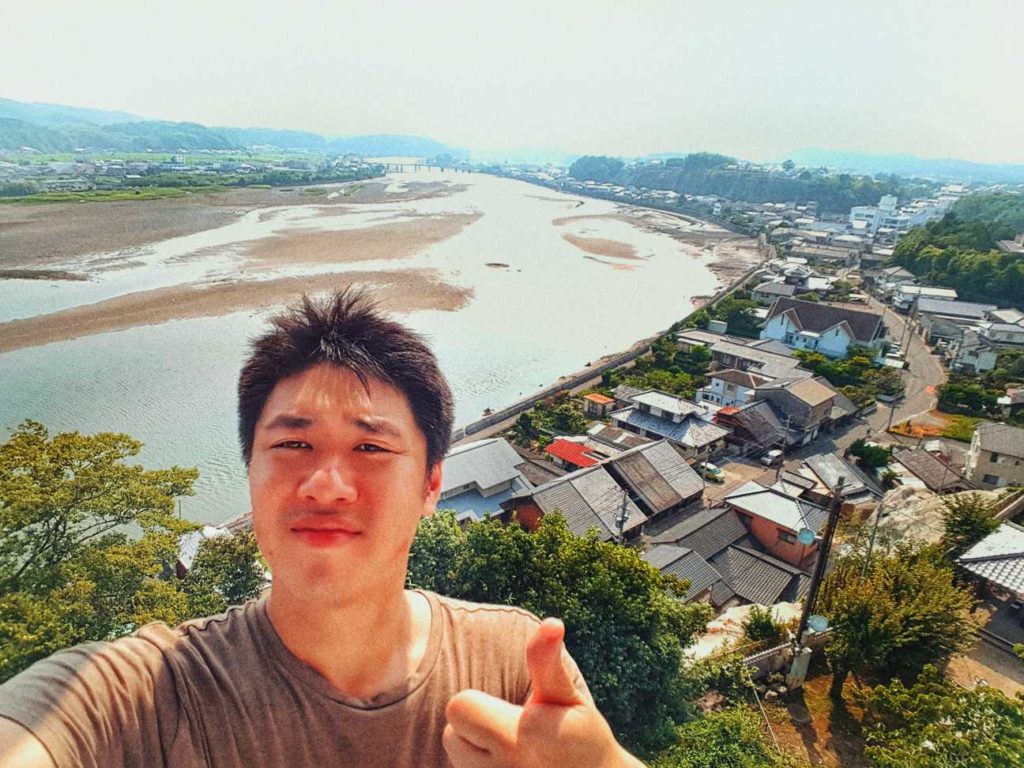
Cherry Blossom Viewing at Kitsuki Castle
Did you know Kitsuki Castle is also an amazing spot to view cherry blossoms/sakura (桜)? In spring, the cherry blossoms transform the castle surrounding into a wonderland, while giving the castle a natural makeup like a geisha (芸者). This makes for some amazing opportunities for photography, while immersing yourself into mother nature’s beauty.
The best time to view them is during early to mid-April when the blooming is at its peak. Below are some splendid shots of the castle in spring, many thanks to Kitsuki Tourism Organisation.
Traveling to Kitsuki Castle & Admission Fee
By Train
Traveling by train is the most popular option especially among solo travelers or with small groups. The castle is located near Kitsuki station (杵築駅) and connected well via the Japan Railways (JR). First, board JR Sonic (JRソニック) train via the Nippō Main Line (日豊本線).
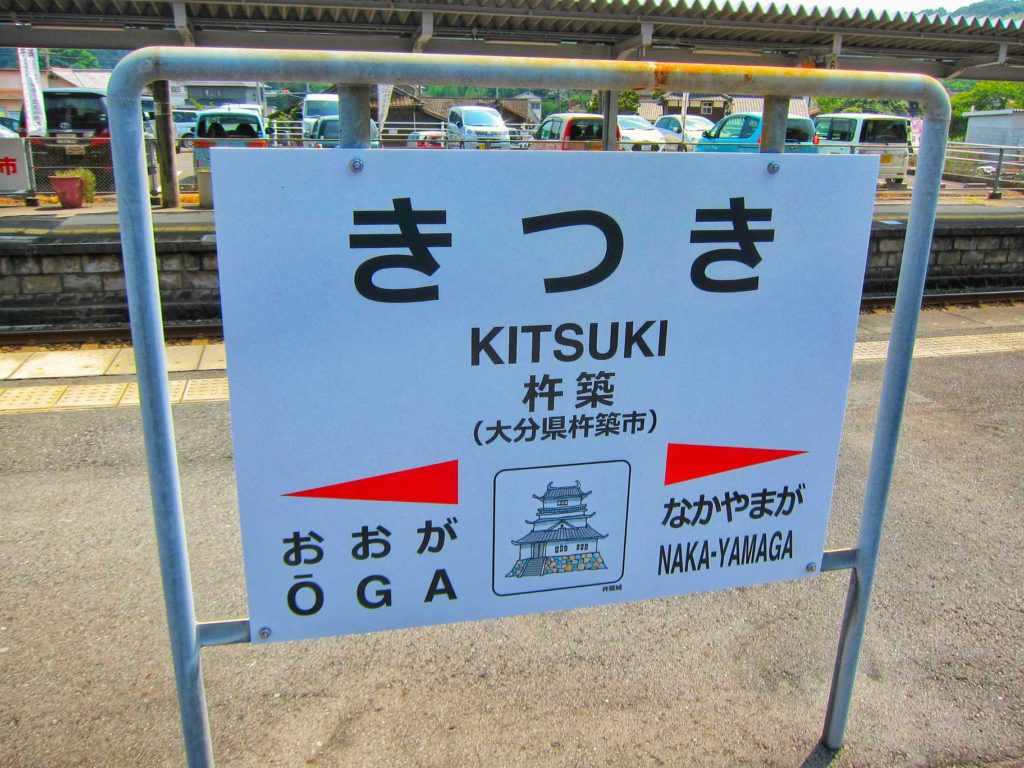
Upon reaching Kitsuki station (杵築駅), board the Kunisaki Kankō Bus (国東観光バス) from the bus stand outside the train station. From then on, the ride takes about 10 – 15 minutes and cost 290 Yen (as of 31st Mar 2021). Then, disembark at the Kitsuki Bus Terminal (杵築バスターミナル) and walk for about 5-10 minutes to reach the castle entrance.
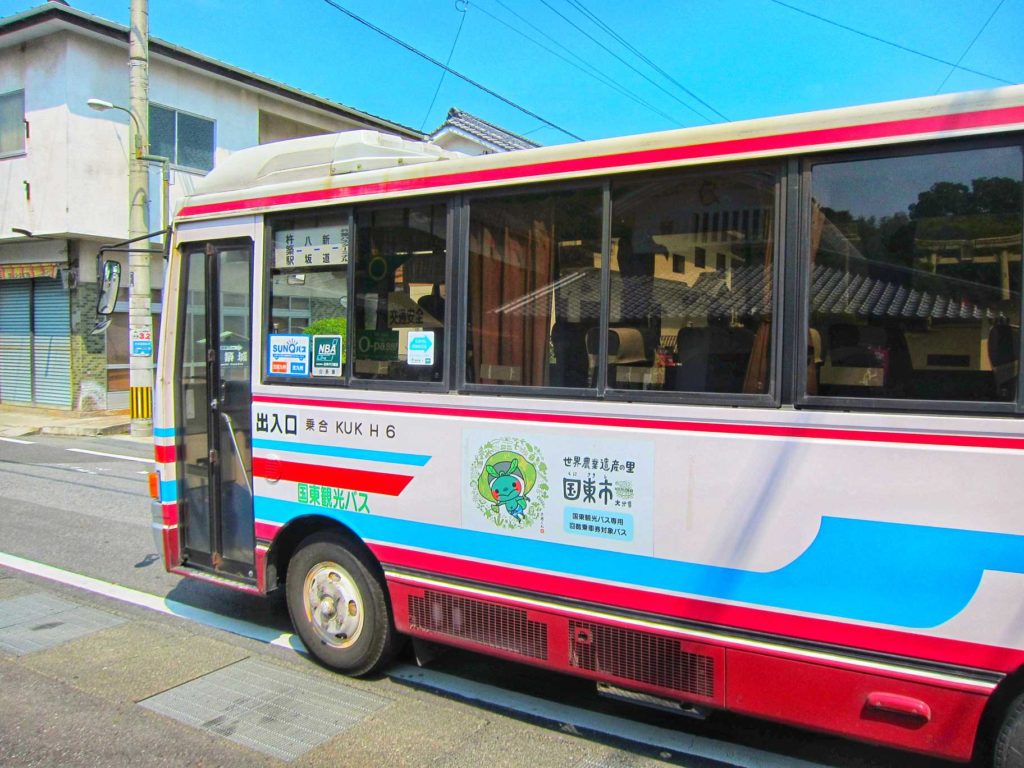
Costs involved (estimate):
Train ticket (as per below) + bus cost (290 yen)
Editor’s Note:
Travelling via train is very convenient; but can also be very costly and most likely will make up 50% of your travel expenses in Japan. If you are keen in visiting Kitsuki together with other parts of Japan, I would suggest the Japan Rail Pass or JR Pass (ジャパンレールパス); a convenient all-you-can-ride pass that allows you to ride on all JR lines in Japan including the JR Sonic on the Nippō Main Line. A wonderful option especially if you are travelling extensively around the country. Check out the JR main page to learn more of this pass.
By Car
A wonderful alternative for those who want to explore not just the castle, but also the surroundings and the countryside in Kyushu. A great option for the families and the larger groups especially. There are also some attractions that are far away from the town center, all the more reason to rent a car. Be sure to check out my separate travel guide for Kitsuki for more info.
Editor’s Note:
A friend of mine used Tocoo; Japan’s leading rental car website which is reliable and provides a wide selection of cars, ranging from different sizes with affordable rates. Are you unsure of getting the necessary license and familiarising with the rules of driving in Japan? Fret not as they provide comprehensive and elaborate guides on what you need to start your driving journey in Japan. To embark on a wonderful journey of driving through the countryside of Japan, check out Tocoo for more details.
Admission Fee for Kitsuki Castle
Admission fee to enter Kitsuki Castle is 400 Yen for adults and 200 Yen for children. On the other hand, you can also opt to buy a combined ticket that includes the entrance fee into the castle along with other attractions in Kitsuki town. Check out my travel guide for Kitsuki for more info.
Overall Thoughts
Would Kitsuki Castle be a castle to die for to visit with its awesome panoramic scenery? I would say definitely visit ONLY if you are visiting Kitsuki the sandwich castle town together. The present keep is a reconstruction of the original; and while it offers a stunning view and a mini museum, there are plenty more beautiful and authentic castles to visit in Japan. It would be a waste if you only visit the castle without checking out the more authentic side of Kitsuki, that is the town itself.
And just like how the town represents the sandwich, the castle represents the garnish which beautifies the sandwich further. If you would like to know more about exploring the beautiful and authentic castle town of Kitsuki, check out my travel guide for Kitsuki for more info.
Loving the content here?
Subscribe and get your free hidden gems in Japan bucket list here.



You May Also Like
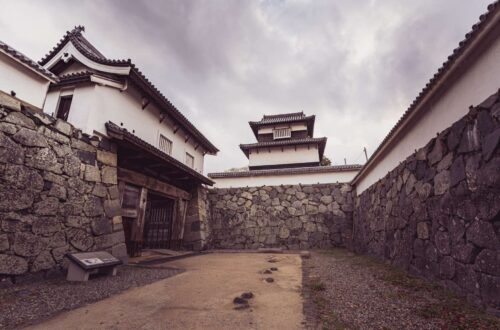
Fukuoka Castle – The Beautiful Castle Ruins Within a City
April 8, 2023
Hikone Castle – The Ultimate Travel Guide & Must-Know Hidden Tips
December 14, 2024